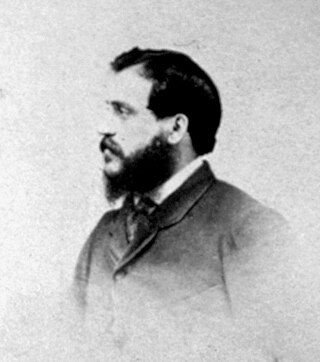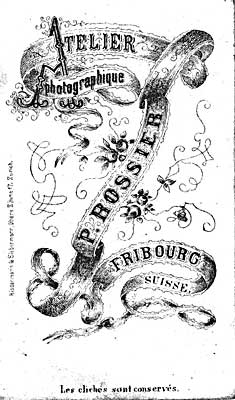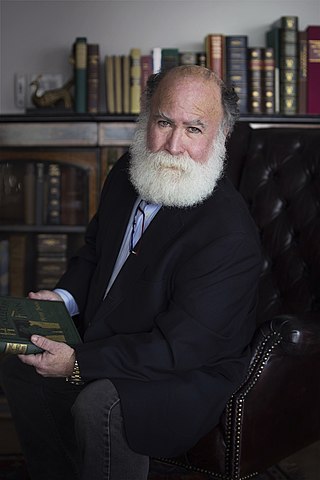Photography in China dates back to the mid-19th century with the arrival of European photographers in Macao. In the 1850s, western photographers set up studios in the coastal port cities, but soon their Chinese assistants and local competition spread to all regions.

Hand-colouring refers to any method of manually adding colour to a monochrome photograph, generally either to heighten the realism of the image or for artistic purposes. Hand-colouring is also known as hand painting or overpainting.

Adolfo Farsari was an Italian photographer based in Yokohama, Japan. His studio, the last notable foreign-owned studio in Japan, was one of the country's largest and most prolific commercial photographic firms. Largely due to Farsari's exacting technical standards and his entrepreneurial abilities, it had a significant influence on the development of photography in Japan.

Felice Beato, also known as Felix Beato, was an Italian–British photographer. He was one of the first people to take photographs in East Asia and one of the first war photographers. He is noted for his genre works, portraits, and views and panoramas of the architecture and landscapes of Asia and the Mediterranean region. Beato's travels gave him the opportunity to create images of countries, people, and events that were unfamiliar and remote to most people in Europe and North America. His work provides images of such events as the Indian Rebellion of 1857 and the Second Opium War, and represents the first substantial body of photojournalism. He influenced other photographers, and his influence in Japan, where he taught and worked with numerous other photographers and artists, was particularly deep and lasting.

Pierre Joseph Rossier was a pioneering Swiss photographer whose albumen photographs, which include stereographs and cartes-de-visite, comprise portraits, cityscapes, and landscapes. He was commissioned by the London firm of Negretti and Zambra to travel to Asia and document the progress of the Anglo-French troops in the Second Opium War and, although he failed to join that military expedition, he remained in Asia for several years, producing the first commercial photographs of China, the Philippines, Japan and Siam. He was the first professional photographer in Japan, where he trained Ueno Hikoma, Maeda Genzō, Horie Kuwajirō, as well as lesser known members of the first generation of Japanese photographers. In Switzerland he established photographic studios in Fribourg and Einsiedeln, and he also produced images elsewhere in the country. Rossier is an important figure in the early history of photography not only because of his own images, but also because of the critical impact of his teaching in the early days of Japanese photography.

Baron Raimund von Stillfried, also known as Baron Raimund von Stillfried-Rathenitz, was an Austrian military officer and early professional photographer in Japan. His historical photographs of Japan following the end of the Tokugawa shogunate in the 1870s have been appreciated for their documentary and artistic value and collected in international archives.

William Thomas Saunders (1832–1892) was a British-born photographer who settled in China and became the leading photographer in Shanghai during the late Qing dynasty. He was the first photographer known to produce hand-coloured photographs in China.

Liu Xucang was a photographer, born in Nanxun, Huzhou, Zhejiang. Liu pioneered in the use of color film, photography of everyday objects, and nudes. He was twice elected secretary of the Chinese Photographers Association 中国摄影家协会. He died in 1966, at the beginning of the Cultural Revolution, presumably as a result of political harassment.
Deng Wei Hon FRPS was a Chinese portrait photographer who was a professor at Tsinghua University, China. He was known for his photographic projects such as the Chinese Cultural Celebrity Portrait project, and the World Celebrities project.
Zhuang Xueben was one of China's first ethnographic photographers. In the 1930s, he left his native Shanghai and travelled to western China to photograph the minority people in four provinces: Sichuan, Yunnan, Gansu, and Qinghai. During the almost ten years of ethnographic research, he took more than ten thousand photographs and wrote a vast amount of materials including research reports, travel notes, and journals. In 1941, he held a photographic exhibition on Xikang in several Chinese cities and about 200,000 people attended the exhibit. These photos and written materials have become a valuable source for anthropologists to the ethnic groups in western China.

Lai Afong was a Chinese photographer who established Afong Studio, considered to be the most successful photographic studio in the late Qing Dynasty. He is widely acknowledged as the most significant Chinese photographer of the nineteenth century.

Fu Wenjun is a contemporary artist who works on photography, digital art, installation art, sculpture, and oil painting. He graduated from Sichuan Fine Arts Institute, and currently lives and works at Chongqing. He has developed his concept and practices of “Digital Pictorial Photography” art style, which involves oil painting, photography, and digital art.

Xu Xiaobing 徐肖冰 was a Chinese cinematographer, filmmaker, and photojournalist. The Chinese Communist Party commissioned Xu and his wife, Hou Bo, to make an official photographic record to share with the Chinese and world public of Party leaders, scenes of battle, and vignettes of everyday life during the Second Sino-Japanese War (1937–1945) and especially of Mao Zedong from the 1930s down to the 1960s. The couple shot many of the best-known photos of Mao and other leaders.
Lu Nan is a contemporary photographer who was born in Beijing, China in 1962. After working for National Pictorial for 5 years, he decided to become an independent photographer. From 1989 to 1990, he shot a series of images of the living conditions of patients in Chinese mental hospitals. From 1992 to 1996, he shot a series of images about Catholicism in China. From 1996 to 2004, he shot a series images of the daily life of Tibetan farmers. Lu Nan is known as "the most legendary photographer in China". He is also the only Chinese contemporary photographer chosen by Aperture magazine as a topic colon.

Gabriel Lekegian, also known as G. Lékégian, was an Armenian painter and photographer, active in Constantinople and Cairo from the 1880s to the 1920s. Little is known about his life, but he left an important body of work under the name of his studio ‘Photographie Artistique G. Lekegian & Cie’. With a large number of now historical photographs of Ottoman Egypt, he documented the country at the turn of the 19th century. Among other collections, his photographs are held in the New York Public Library and the Victoria and Albert Museum, London.
Niu Weiyu is a Chinese photojournalist whose career started in the 1940s with coverage of the Chinese Communist Party's wartime experiences and continued after 1949. She is praised for her photographs of ordinary workers and ethnic groups, and as one of the few women in photography, she specialized in female images.

Stephan Loewentheil is an American antiquarian and a rare book and photograph collector. He is the founder and president of the 19th Century Rare Book and Photograph Shop, located in New York, New York and Baltimore, Maryland. Over a career spanning four decades, Loewentheil "has excelled … in unearthing obscure bibliographic details leading to the acquisition of under-appreciated rarities, seminal documents and early historic photographic images." Loewentheil has been described as a "super-collector," whose clients include celebrities, heads of state, American presidents, and some of the most prominent private collectors and institutional clients of rare books and photographs.

Ernst Boerschmann was a German architect, photographer, and sinologist known for his research on and photography of historical Chinese architecture. He was the first foreigner to systematically document China's religious architecture, compiling thousands of photographs, sketches, and architectural surveys over multiple trips to China in the first half of the twentieth century.

Liang Shitai 梁时泰 – also known as Liang Seetay – was one of the foremost portrait photographers working in China in the late Qing dynasty. The artist specialized in portraits of high-ranking officials, and photographs that appealed to Chinese clients interested in literati painting. As one of the first photographers of prominent Qing Dynasty officials and other distinguished citizens, Liang Shitai's work convinced the Qing court to embrace photography as an artistic medium for the first time. He established his studio in Hong Kong in the early 1870s, then relocated to Shanghai in the late 1870s, and later to Tianjin in the 1880s. Liang Shitai's photographs are among the most historically important and visually exquisite of their time.

Photography in India refers to both historical as well as to contemporary photographs taken in modern-day India.




















